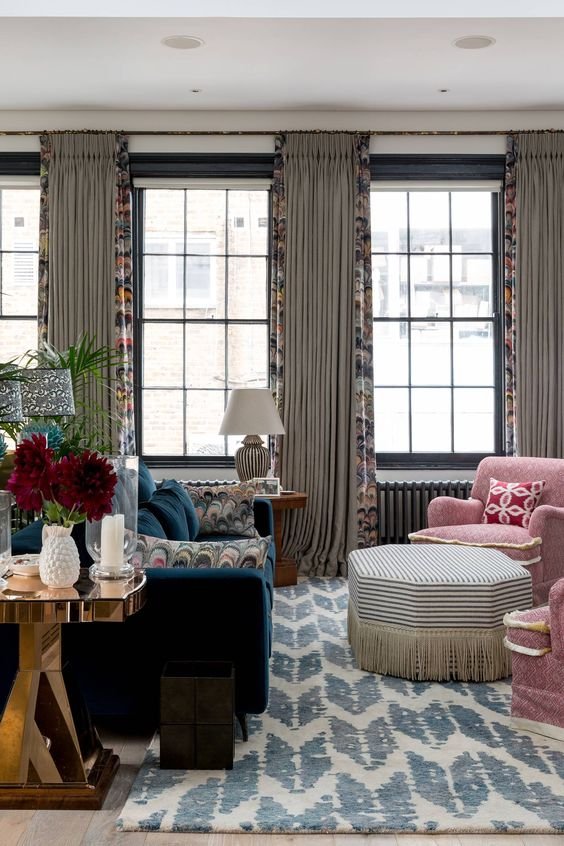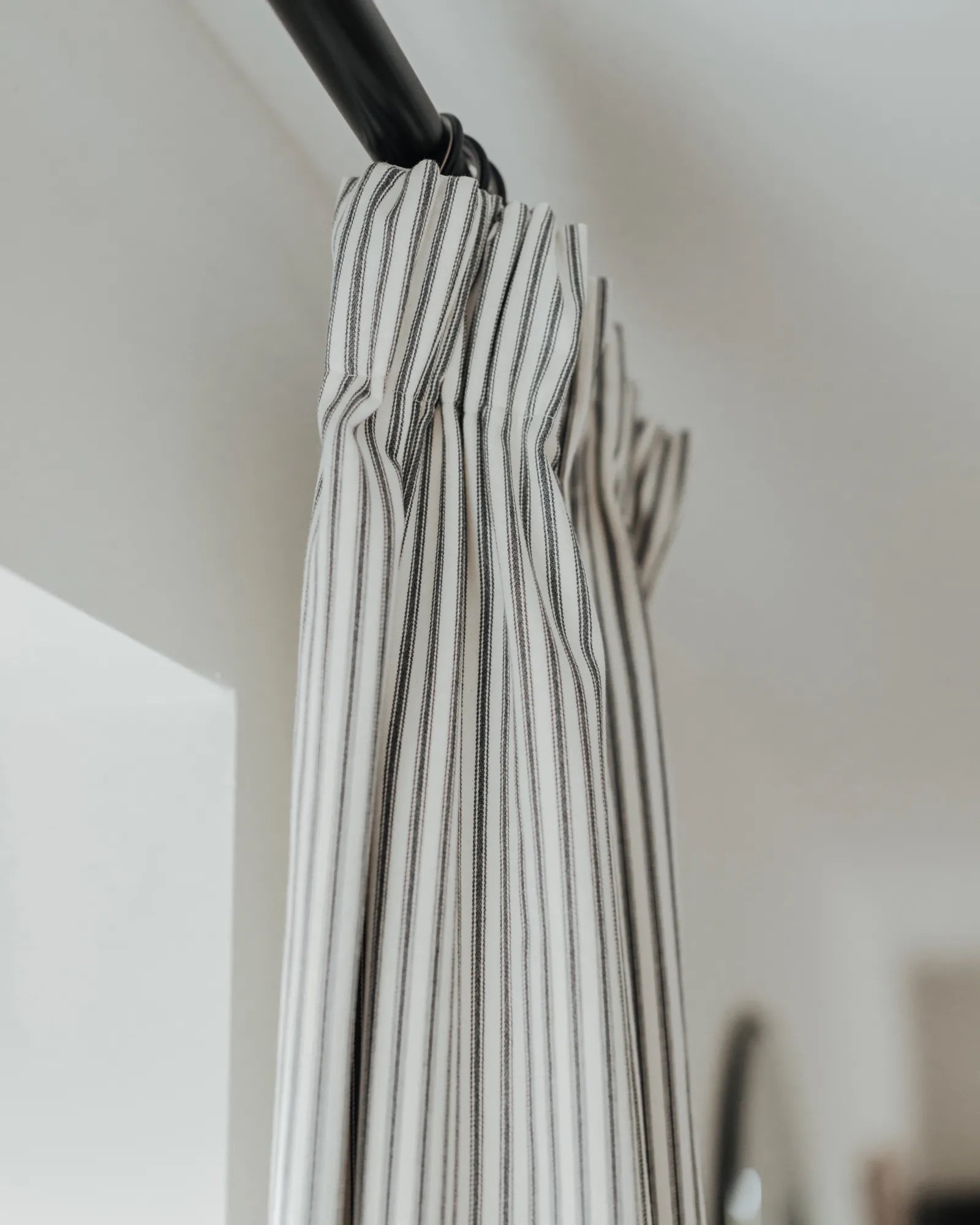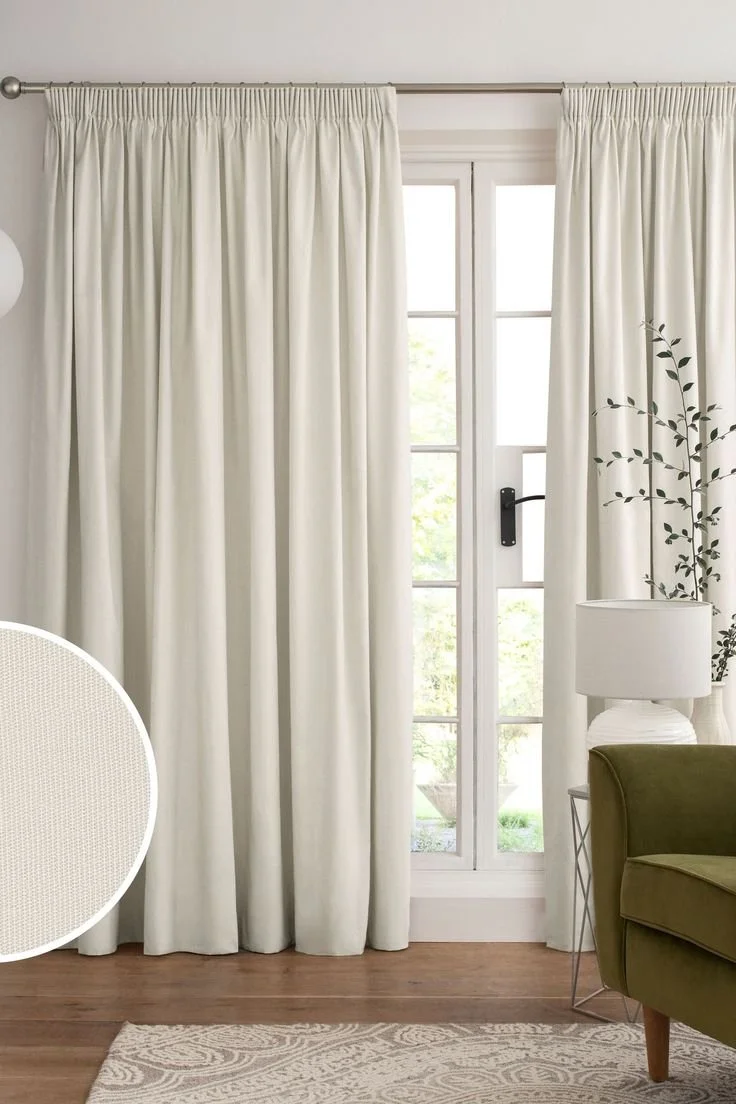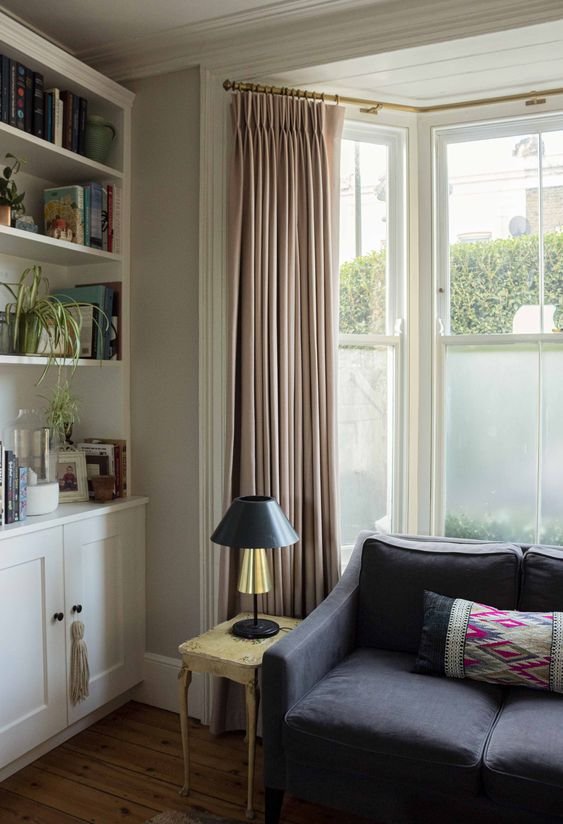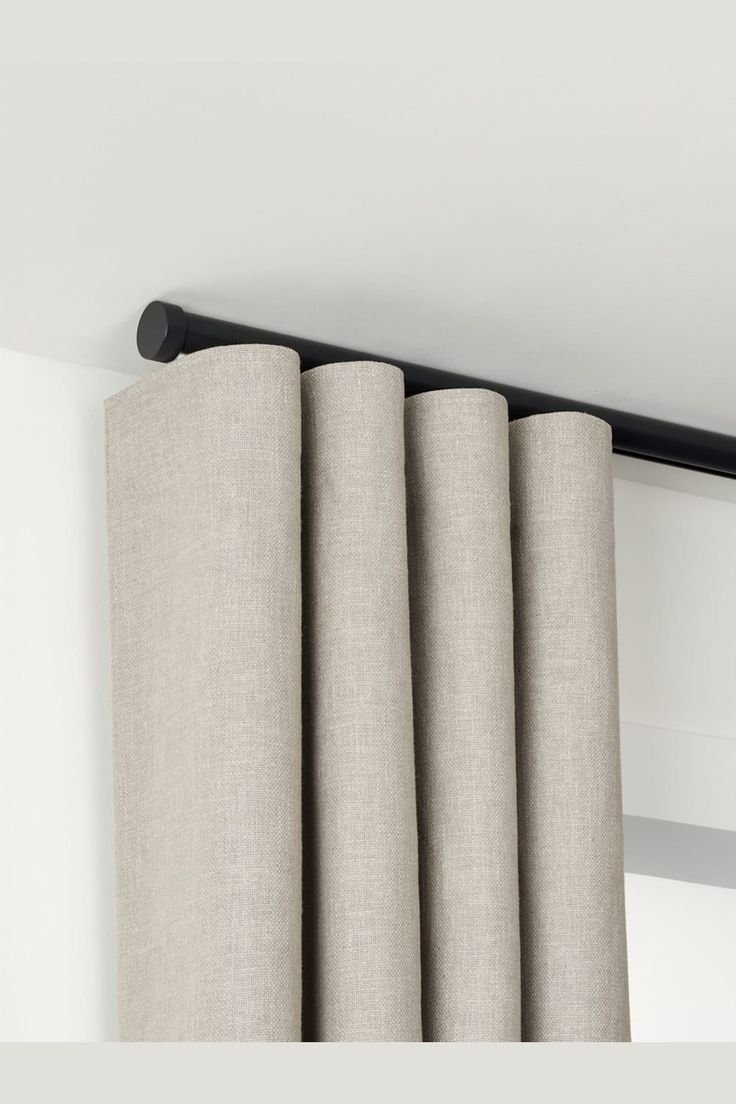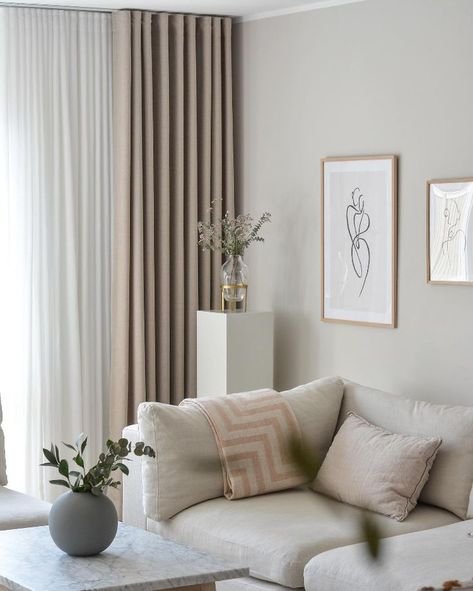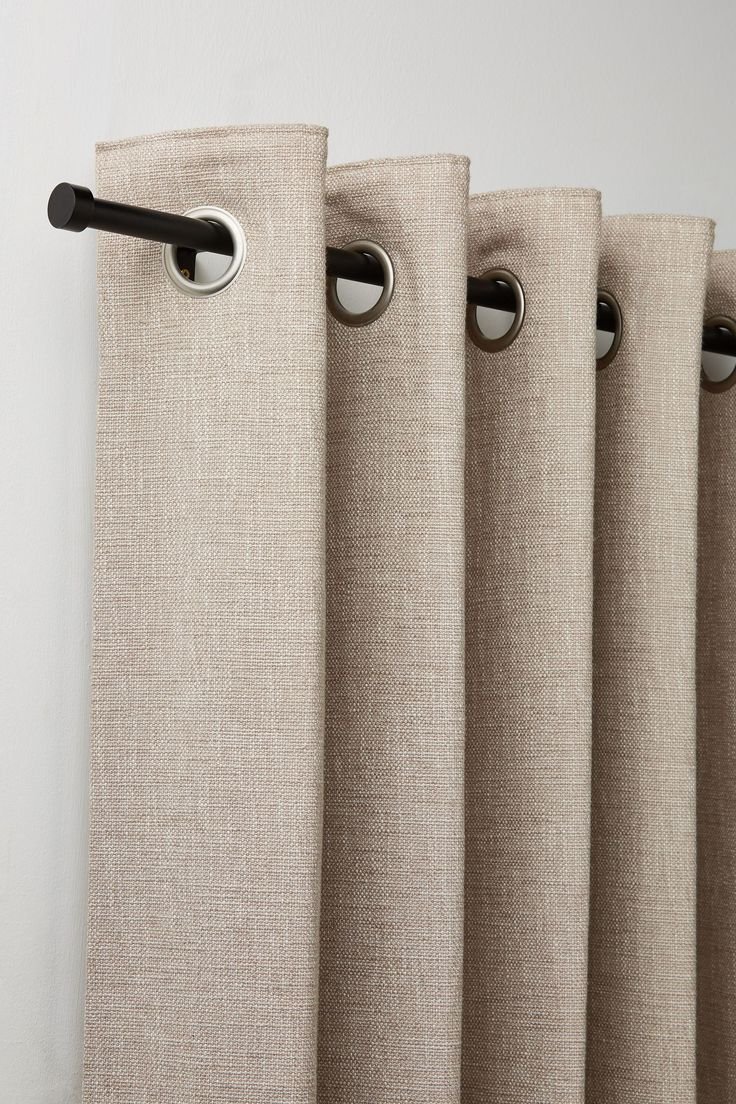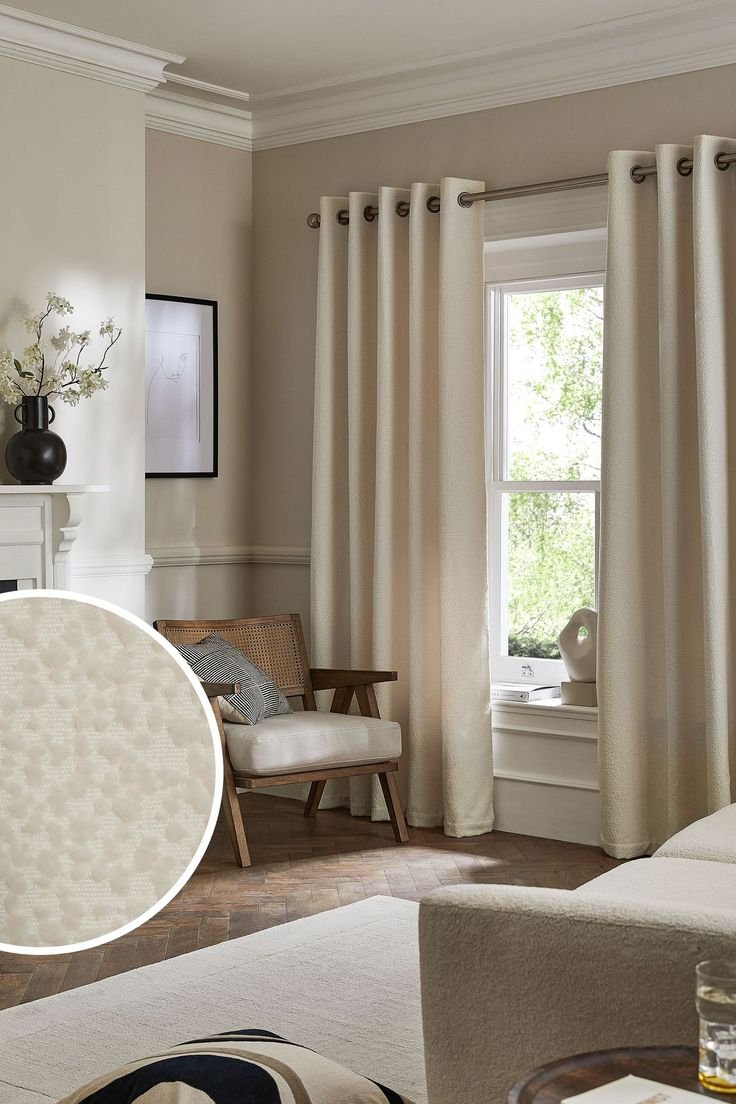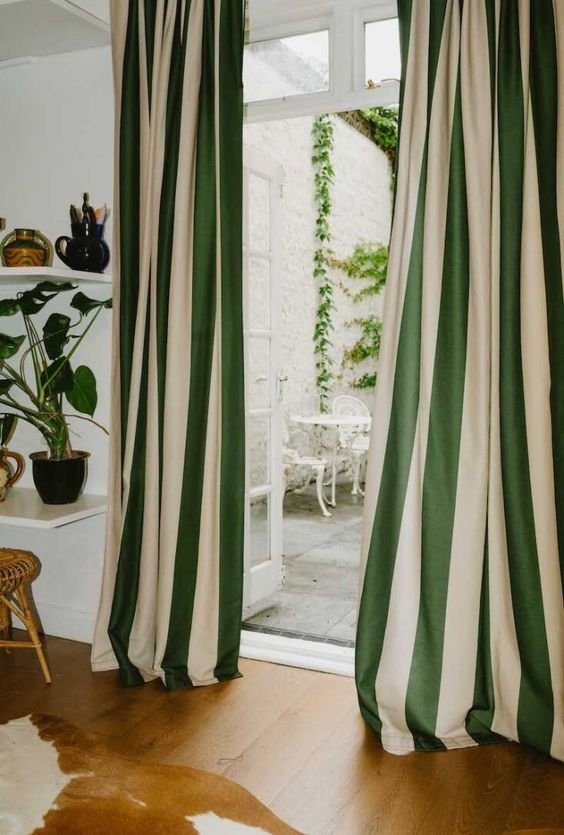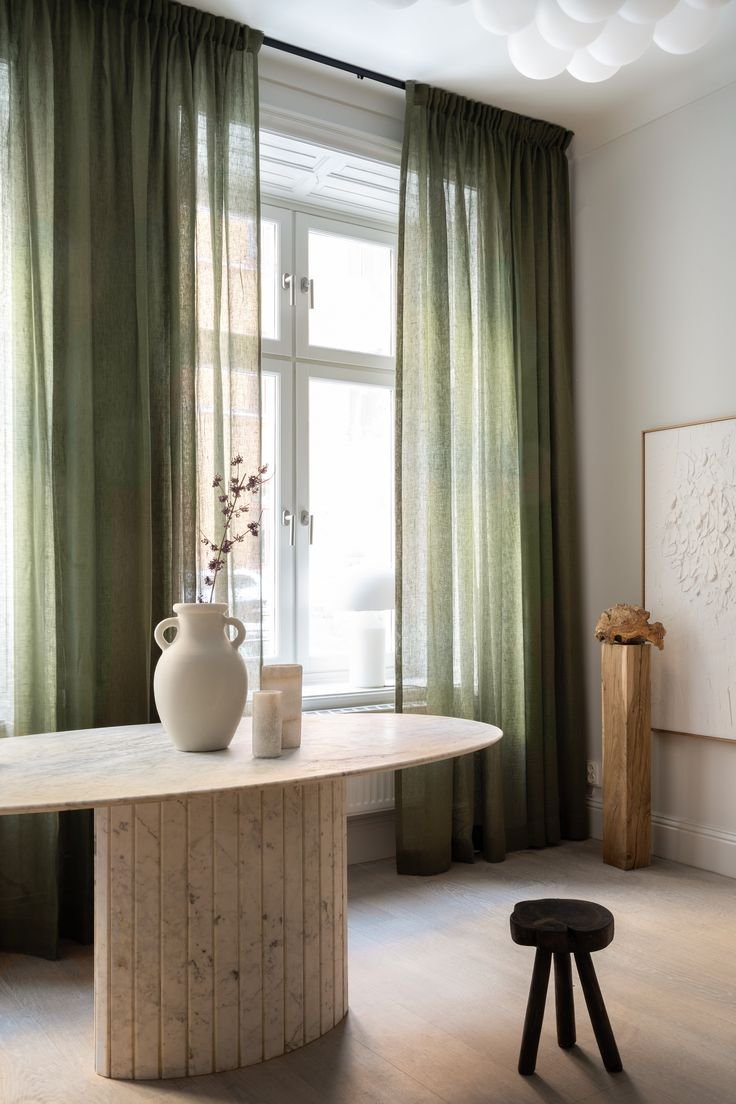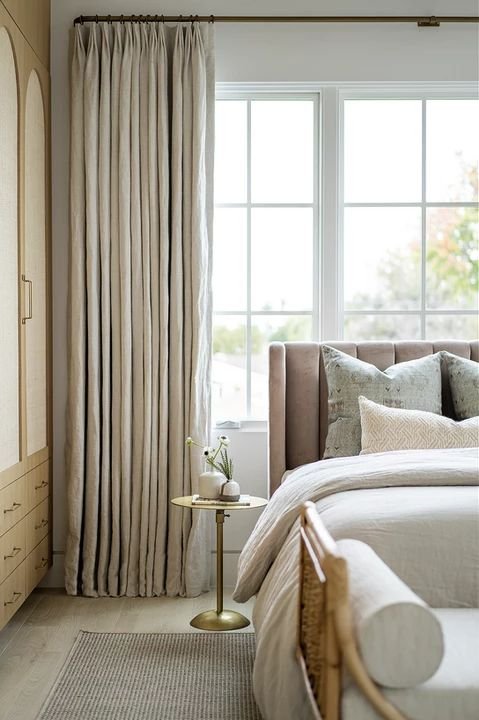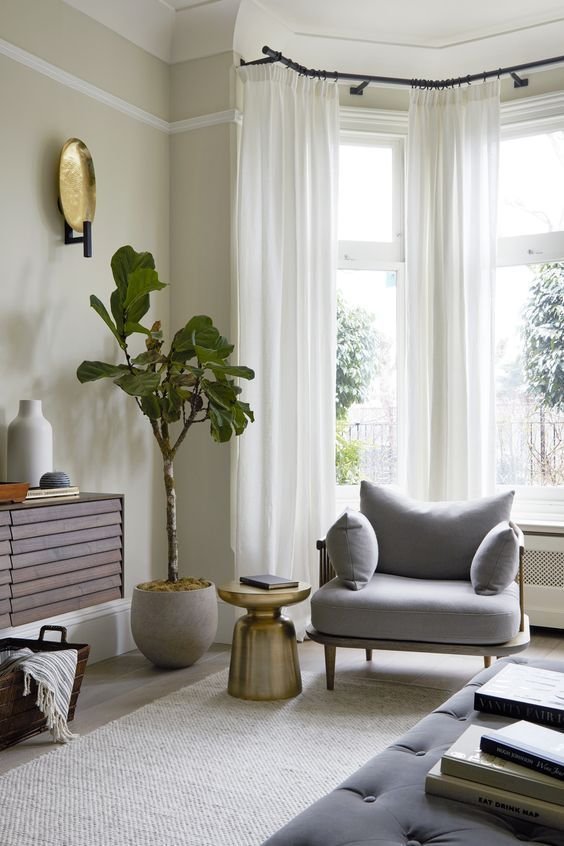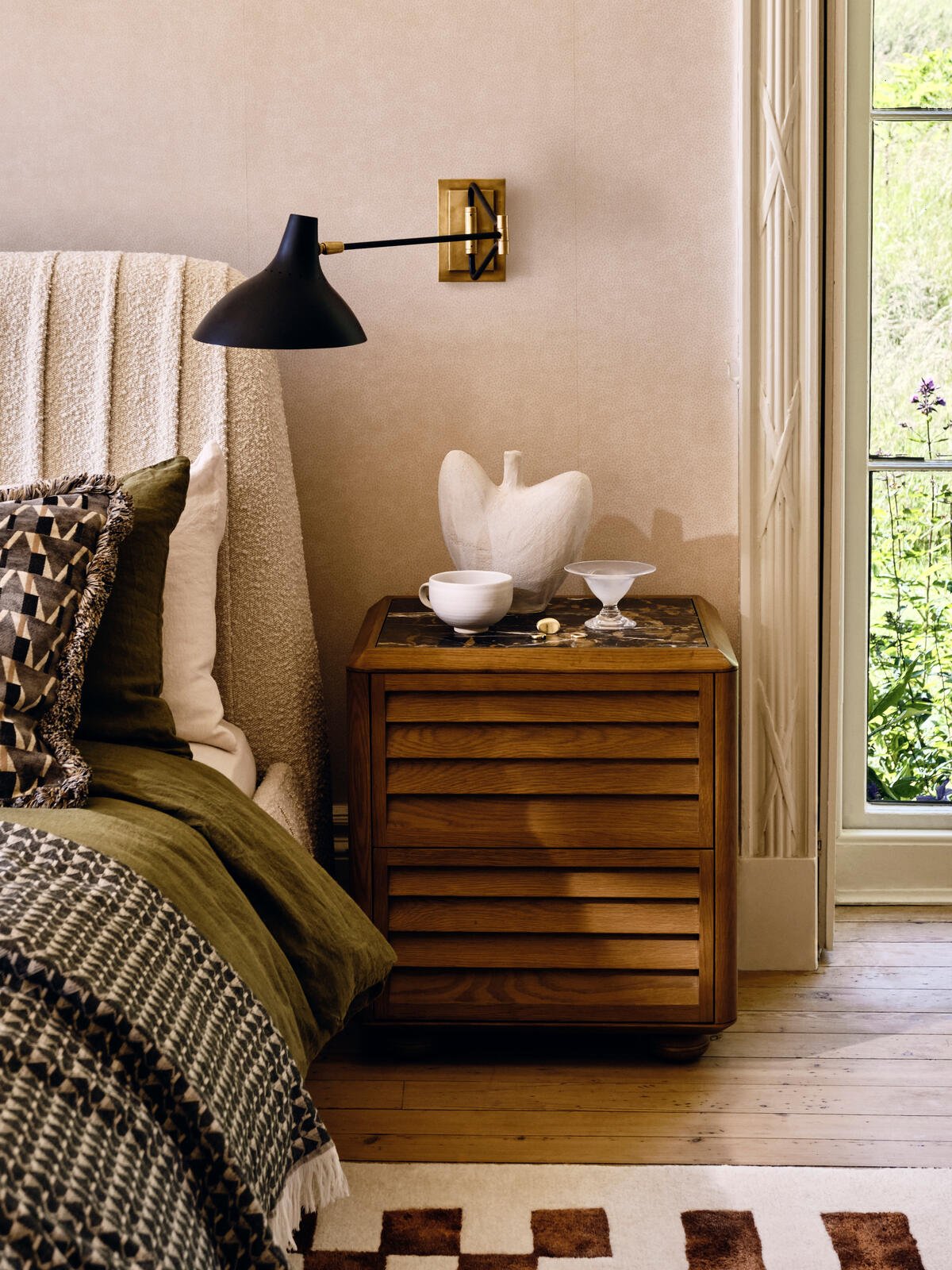A guide to choosing curtains
Just like a jacket is the finishing touch to an outfit, curtains can be thought of as the finishing touch to a room. Not only do they frame a window, but they add colour, texture, character and warmth. Here’s how to choose the perfect pair of curtains.
Understand the room
Source: Stitched
Source: House and Garden
Firstly I’d consider the room - what is it used for, and what are the requirements for window dressings? For example in a bedroom, you would probably want curtains to block out the light entirely. In a living room they might be purely for decoration or occasional use, or for privacy. Understand what the curtains need to do first and this will help you to choose.
Choose a curtain header style
The header of a curtain refers to the style at the top of the curtain, where the fabric meets the pole or the track. The header influences the overall finished style of the curtain - how it hangs, it’s stack back (i.e. the space the curtains take up when open) as well as cost. Here’s a summary of the different header styles:
Pencil Pleat
Pencil pleat is one of the most popular curtain header styles, giving a casual but stylish look. They give fullness to curtains and provide a large stack back, so are best if you have a large window to dress. They use a lot of fabric so are one of the pricier headings to choose.
Double/Triple pleat
Source: Amazon
Source: The Hackney Draper
This is a more formal and classic looking header and best suit more traditional or formal style rooms. They have less stack back than pencil pleat but still require a lot of fabric, and the labour costs are higher, making them the most expensive choice.
Wave
Source: John Lewis
Source: Hasta Home
Wave curtains look effortless and particularly suit when they are hung from ceiling to floor. The wave style doesn’t distort any pattern, and have little stack back so work well in smaller space. They are less expensive to make as they require less fabric, although they do require a special track to hang them.
Eyelet
Eyelet curtains don’t distort pattern and they have little stack back. They don’t require much fabric so are one of the cheapest options. They’re not suitable for long windows where the pole requires a bracket, as the eyelet can’t move past them. They’re also not a great choice if you need blackout curtains, as light gets in through the eyelets.
Consider your colour palette and pattern
Source: Remodelista
Source: House and Garden
Curtains can turn a cold or boring room into one with warmth, colour and pattern, so you have an opportunity to really enhance a space with them. I’d advise you to think about the elements that are staying in the room (furniture, flooring, wall colours) and choose a complementary colour. If you want to add some visual interest, choose a pattern which complements the style of the room - is it modern, quirky, classic? Or if you don’t like the idea of pattern, don’t underestimate texture.
Choose an appropriate fabric
There’s plenty of fabrics to choose from, so have a think about what your requirements are before choosing fabric samples. The most popular fabrics for curtains are cotton, linen, velvet and woven fabrics, and they all come with their own properties including heaviness, softness, insulation, resistance to sun-bleaching, and sheerness. Order samples and pay attention to what the curtain is made from, ensuring it’s appropriate for the space and style you are going for.
Get the dimensions right
Source: Katie Hodges Design
Source: Brooke Wagner Design
This is an important step! By rule of thumb, curtains look best when they are floor length, and should stop 1cm above the floor so that they hang nicely and don’t gather dust. The higher and wider you can hang them, the bigger the window will look.
If you are ordering made to measure curtains online (I particularly rate Jane Clayton, The Pure Edit and Just Fabrics) make sure to follow their measuring guides. Alternatively, use a local curtain maker who will most likely be able to come and measure for you.
Don’t forget the curtain pole
Source: Decoholic
Source: Room For Tuesday
This is another crucial step! The wrong pole can make opening and closing your curtains difficult or even damaging, whereas the right pole can enhance a room’s style and complement the curtains. Start by considering the style of the room - sleek and modern poles would work well in a contemporary space, or a more decorative pole with a fancy finial might suit a more traditional room.
Always check how much weight the pole can hold and make sure it’s appropriate for your curtains. For awkward shaped windows (like bay windows) with heavy curtains, you will most likely need a pole which can be bent in a factory, Silent Gliss is the best brand and a curtain fitter can help measure and order this for you. For more straightforward windows, Cameron Fuller make sturdy and stylish poles.
If you’d like my help with your next project, check out my services to see how we can work together. If you’ve enjoyed this blog, don’t forget to subscribe at the bottom of this page to receive my new post in your inbox every Sunday.



